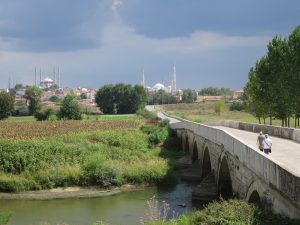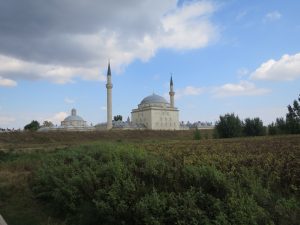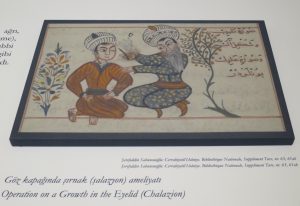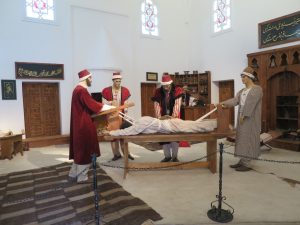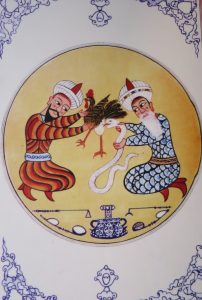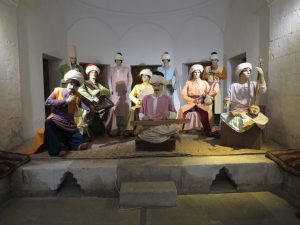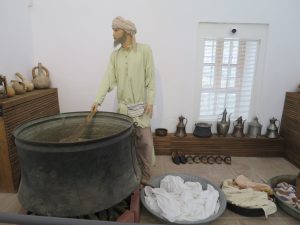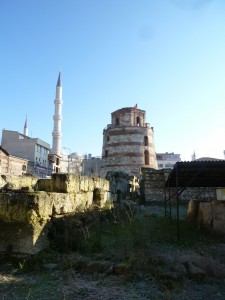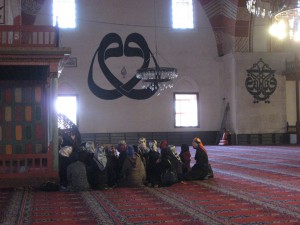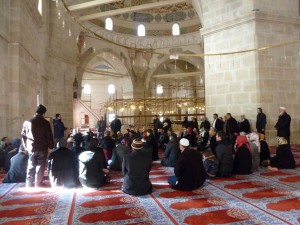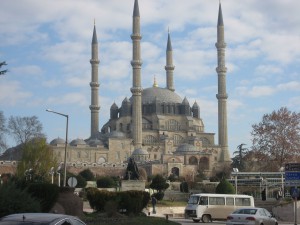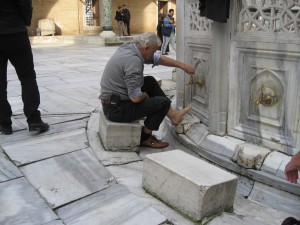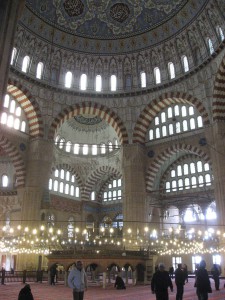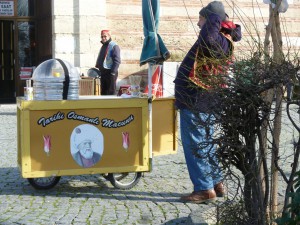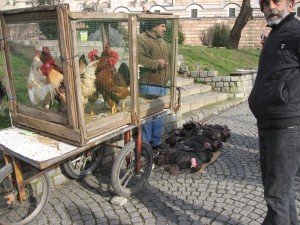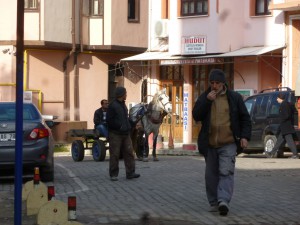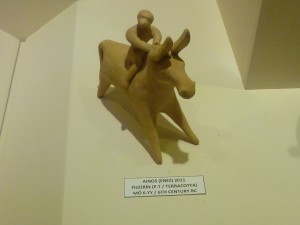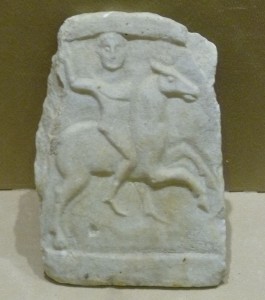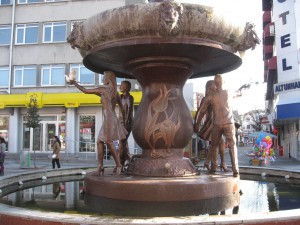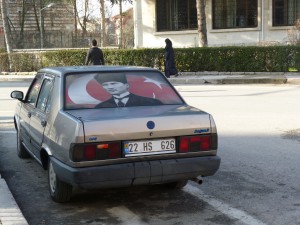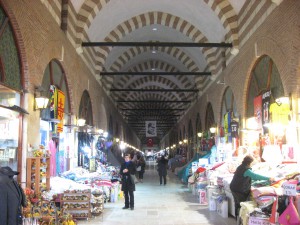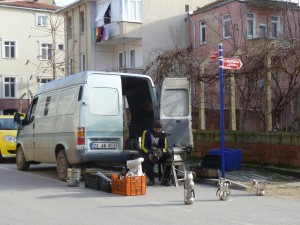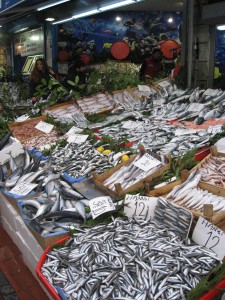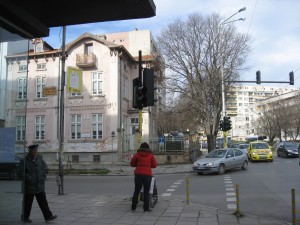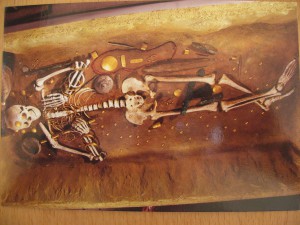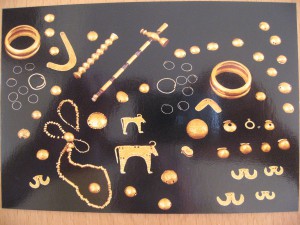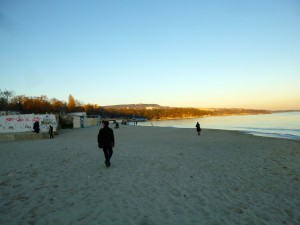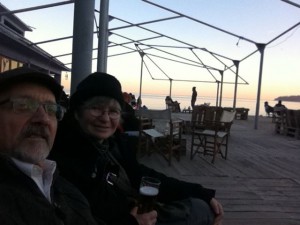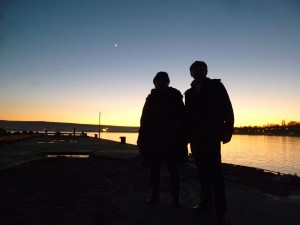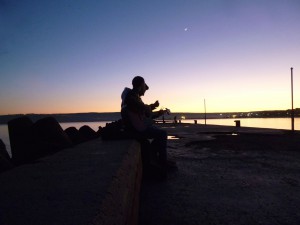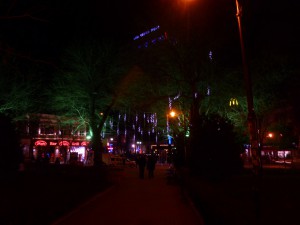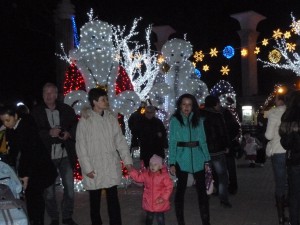Edirne

7. september 2018 | Posted in English | By Eva Rikke Schultz
Kommentarer lukket til Edirne
Edirne
Vi har haft et par gode dage i Edirne. Vi tog en ekstra overnatning, så Erling har haft ro til at få styr på maven. Og så har der været tid til at vænne sig til, at vi nu er i en helt anden del af verden. Helt hørligt er det især de 5 gange i døgnet, hvor bønnerne messes ud fra Moskeerne.
Moskeer
Edirne er moskeerne by, men også arnested for Osmannisk videnskab og kultur. Edirne var hovedstad inden Osmannerne erobrede Konstantinopel – nu Istanbul. Det var i Edirne den Osmanniske mesterarkitekt Minar Sinan (1490-1588) byggede Selimiye Moskeen og det tilhørende kompleks med koranskole, bazar og folkekøkken til bespisning af de fattige. Moskeen er det første Osmanniske bygningsværk, der i størrelse og arkitektonisk lethed overgik Hagia Sofia, der blev bygget 1000 år før i Istanbul. Pengene til byggeriet kom fra erobringen af Cypern.
Minar Sinan
Minar Sinan blev født i Kayseri som ikke muslim, men blev udvalgt (og bortført) til en paladsskole, hvor han blev opdraget som muslim og efterfølgende indrulleret i Janisar-korpset. Han fik mulighed for at studere arkitektur, og han blev hoffets chefarkitekt, da han var 55 år gammel. I sin karriere har han bygget 81 moskeer, 51 broer, 35 badehuse, 33 bazarer og 18 karavanseraier.
Men inden Sinan blev født havde andre arkitekter været i gang i Edirne. De ældste moskeer (Bl.a Eski- moskeen) er bygget lige omkring år 1400, hvor Osmannerne erobrer byen fra Østromerne, Det er ca. 50 år før det Østromerske riges endelige sammenbrud i 1453, hvor den sidste bastion – Konstantinopel- falder.
Hospital og lægekunst
Men det mest spændende sted vi besøger i Edirne er et moskekompleks med hospital og medicinskole. Det er bygget 1484-88 af Sultan Beyazit II. I dag er det det fineste museum, der giveren meget fint indblik i, hvordan antikkens lægekunst blev videreført og videreudviklet af Osmannerne.y
Det er spændende at se det helhedssyn, der er på behandlingen af syge, som vi også kender fra den græsk/ romerske tradition, som i Eskleoion i Bergamo. Esklepion skal vi besøge senere på turen.
Det er både lægeskolen og hospitalet, der er omdannet til museum.
På medicinskolen ser man både de studerendes værelser og undervisningslokalerne. Det hele er meget livagtigt indrettet med tableauer med voksdukker, møbler og instrumenter, og plancher med tekst og gengivelse af miniaturemalerier fra 1500’tallet.
Undervisningen var både teoretisk og klinik, hvor de forskellige instrumenter og undersøgelsesmetoder har været afprøvet på figuranter eller patienter. Lærerbøgerne var håndskrevne og rigt illustreret med miniaturetegninger af sygdomme og behandlingsformer.
Eleverne var voksne og erfarne behandlere og de fik løn under opholdet på skolen. På skolen blev der også eksperimenteret med nye behandlingsformer. Bl.a. Fandt man ud af at udvinde serum til behandling af slangebid, ved at lade forskellige slanger bide en hane, hvorefter man kunne udtrække modgift af hanen.
På hospitalet arbejdede man både medicinsk, kiropraktisk, terapeutisk og kirurgisk. Der var et apotek, hvor man lavede helbredende pastaer, væsker og olier af helbredende planter. Der var køkken, og alle patienterne fik lægeordineret kost. Rygskader m.v blev behandlet med stræk eller tryk.
Der blev arbejdet med musik-, vand- og duftterapi. Og endelig blev der vist mange eksempler på kirugiske indgreb.
I 1700’tallet var hospitalet med i et internationalt samarbejde om udvikling af koppevaccine. Og så var der selvfølgelig også et vaskeri.
Five myths about Ahmedabad

15. oktober 2016 | Posted in English, Ude | By Rikke Schultz
Kommentarer lukket til Five myths about Ahmedabad
Sage Dadhichi’s sacrifice
Lord Indra was in search of a weapon to destroy the demon Vruttasur. He was advised to secure the bones of a living person with noble qualities to make such the weapon – Vajra. Sage Dadhichi, who lived on the banks of the river Shwabhramati (Sabarmati) at Dudheshwar readily accepted the request of Indra and sacrificed himself for the cause. It is on the foundations of such selfless sacrifice that the history of the city rests since millennia.
The story about a hare chasing a dog
Legend has it that once on a hunting trip, king Ahmedshah found a hare chasing a dog. He pondered over the unnatural phenomenon and came to the conclusion that the soil of the land must have some unusual power. Impressed by the dauntlessness and bravery, he chose to establish a settlement on the same soil and that is how Ahmedabad was founded.
Goddess of prosperity held within the city
Ahmedabad has been a prosperous city since ages. Legend has it that once a guard saw a magnificent and aristocratic lady leaving the city through the Bhadra Gate, late at night. He asked her who she was. The lady replied that she was Goddess Lakshmi and wanted to leave the city. Bound by duty, the guard asked her to wait till he returned with the king’s permission to let her go. Lakshmi promised to wait till he returned. Realizing that the city will be doomed without her, the guard decided to sacrifice himself for the prosperity of the city and so beheaded himself. Ever since, Lakshmi has remained within the city keeping her promise to be here till the guard comes.
Four Ahmeds found the city:
The city of Ahmedabad is believed to have been founded on piousness. King Ahmed Shah sought the advice of the priest Al Khizr khwaja while establishing the city of Ahmedabad. The priest advised the king to find four pious men named Ahmed who have never in their life missed an afternoon prayer, to lay the foundation stone of the city. This, the priest said, would ensure the city’s prosperity. The four Ahmeds who laid the four corner stones of the city included King Ahmedshah who laid a stone in the east, Saint Ahmed Khattu in the west and two others from Gujarat -Kaji Ahmed and Mulla Ahmed for the north and south. The city is thus founded on the tenets of piousness, peace and collective concern.
Maneknath and the fort wall
A sage called Maneknath used to live on the banks of the river Sabarmati. Legend says that he wove a mat during the day when king Ahmedshah would carry out the construction of the fort wall. At night, however, Maneknath would unravel the mat and the fort wall would collapse. This is how he protested for several days. Once, the king asked him to demonstrate his powers by entering a small jar. The sage readily agreed. But as soon as he did so, the king closed the lid thereby trapping the sage within the jar. In memory of the sage Maneknath, the founding bastion of the fort wall was named as Manek Buraj and his place as Manekchowk. This story of Maneknath points to the pride in a place while the naming of the Buraj in his memory speaks of mutual respect, within rivalry.
Snapshots from Edirne in Turkey

28. december 2014 | Posted in English, Ude | By Rikke Schultz
Kommentarer lukket til Snapshots from Edirne in Turkey
Yesterday we arrived to Edirne in Turkey
Today we took a walk and we visited 3 mosques, an archaeological site, a Historical Museum and an old marked, all of it within short walking distance. It is an amazing city.
The three mosques we visited are
Eski Cami from 1414
Üc Serefeli Cami from about 1447
Selimiye Cami from 1569
First we went to see the old Macedonian Tower and the excavation of part of the old city Hadrianopolis, founded by the Roman emperor Hadrian (117-138 AD)
Then we visited the Mosques. The first ones we visited had many local visitors in guided groups, learning about the mosque.
The third, and biggest, and most impressive one – the Selimiye Cami – looked bright in the morning sun
Inside there was a remarkable light and outside the mosque there was a remarkable live
Then we went to the archaeological museum. Here we found some very old images of men on horseback
On our way to the marked, we met symbols of Ata Türks modern Turkey
A young couple dancing with a peace dowe and a Olive branch under a fountain with lions
After visiting the fishmarked we went to a restaurant and had dinner.
Merry Christmas from Varna in Bulgaria

24. december 2014 | Posted in English, Ude | By Rikke Schultz
Kommentarer lukket til Merry Christmas from Varna in Bulgaria
Marry Christmas
To all our friends
from
Palle and Rikke
in Varna Bulgaria
We went out the 24. December to find Christmas in Varna
We looked in the streets of Varna
We could not find the Christmas
We looked at the museum
But we only found a 7000 year old gold treasure
We looked at the beach of the Black Sea
But we only found relaxed and beer drinking people
It became darker and we looked at the harbour
but we only found a star and guitar playing boys
We gave up looking for Christmas and started to look for a place to have our dinner
and suddently the Christmas was there
Happy Christmas from Santa Claus, the Snow Queen and the people of Varna
